-
 Bitcoin
Bitcoin $107,443.3008
-1.17% -
 Ethereum
Ethereum $2,494.2503
-0.63% -
 Tether USDt
Tether USDt $1.0003
0.00% -
 XRP
XRP $2.2496
2.23% -
 BNB
BNB $658.7569
0.63% -
 Solana
Solana $154.9826
1.94% -
 USDC
USDC $1.0000
0.01% -
 TRON
TRON $0.2799
1.07% -
 Dogecoin
Dogecoin $0.1659
-1.78% -
 Cardano
Cardano $0.5745
0.25% -
 Hyperliquid
Hyperliquid $39.7005
0.13% -
 Bitcoin Cash
Bitcoin Cash $519.5989
3.78% -
 Sui
Sui $2.7874
-2.40% -
 Chainlink
Chainlink $13.3762
-1.69% -
 UNUS SED LEO
UNUS SED LEO $9.0784
-0.64% -
 Avalanche
Avalanche $17.9846
-2.81% -
 Stellar
Stellar $0.2390
-0.06% -
 Toncoin
Toncoin $2.9028
0.25% -
 Shiba Inu
Shiba Inu $0.0...01147
-2.17% -
 Litecoin
Litecoin $86.6956
-1.27% -
 Hedera
Hedera $0.1508
-0.50% -
 Monero
Monero $322.6222
3.26% -
 Polkadot
Polkadot $3.4124
-2.99% -
 Dai
Dai $0.9999
0.00% -
 Bitget Token
Bitget Token $4.5434
-1.97% -
 Ethena USDe
Ethena USDe $1.0002
0.00% -
 Uniswap
Uniswap $7.1562
-2.61% -
 Aave
Aave $275.8830
-1.02% -
 Pepe
Pepe $0.0...09790
-4.04% -
 Pi
Pi $0.5018
-5.09%
Is DOGE mining harmful to computers? Will long-term mining affect the life of hardware?
DOGE mining can harm computers by straining CPUs and GPUs, causing heat buildup and wear; effective cooling and monitoring are crucial for hardware longevity.
May 04, 2025 at 05:42 pm
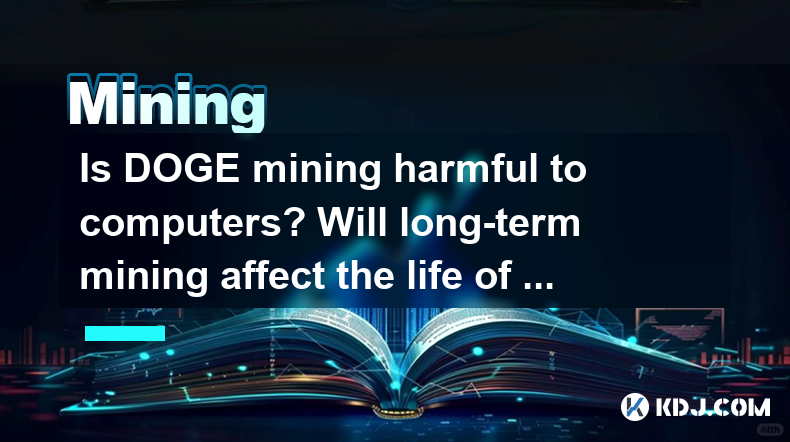
Is DOGE mining harmful to computers? Will long-term mining affect the life of hardware?
Mining DOGE, or any cryptocurrency, can indeed have an impact on the computers used for the process. Understanding the nature of mining is crucial to assessing its potential harm. Cryptocurrency mining involves solving complex mathematical problems to validate transactions and add them to the blockchain. This process requires significant computational power, which puts a strain on the hardware components of the computer.
The impact on hardware components is primarily seen in the CPU and GPU, which are the most heavily utilized during mining. The continuous high-intensity operation can lead to increased heat generation, which, if not properly managed, can cause thermal throttling or even permanent damage to these components. Additionally, the power supply unit (PSU) is under constant stress, as it needs to provide a stable and high level of power to the system.
Heat management is a critical factor in mitigating the potential harm from mining. Without adequate cooling solutions, the heat generated by the CPU and GPU can lead to overheating. Over time, this can cause the components to degrade faster than they would under normal usage conditions. Ensuring proper ventilation and cooling is essential to prolong the life of the hardware.
The longevity of hardware is another concern for miners. Long-term mining can accelerate the wear and tear of components, particularly the fans, which are crucial for cooling. The constant operation can lead to fan bearing wear, which might result in increased noise levels or even fan failure. Additionally, the capacitors on the motherboard and other components can degrade over time due to the heat and electrical stress.
Power consumption and electrical stress are also significant factors. Mining operations consume a lot of electricity, and the constant high power draw can lead to increased wear on the PSU. Over time, this can result in a higher failure rate of the PSU, which can be costly to replace. It's important to use a PSU with a sufficient wattage rating and good efficiency to minimize this risk.
Software and operational considerations also play a role in the impact of mining on computers. Running mining software continuously can lead to system instability if not properly configured. It's important to monitor system temperatures, performance, and stability regularly to prevent crashes or hardware failures. Additionally, ensuring that the operating system and drivers are up to date can help in maintaining system stability.
The Role of Cooling Solutions
Effective cooling solutions are vital for anyone engaged in DOGE mining. The choice between air cooling and liquid cooling can significantly affect the longevity of the hardware. Air cooling, while more common and less expensive, may not be as effective in dissipating heat from high-performance components used in mining. Liquid cooling, on the other hand, can provide better heat dissipation but comes with a higher initial cost and maintenance requirements.
- Air Cooling: Ensure that the case has good airflow. Use high-quality fans and consider adding more fans if necessary. Regularly clean the fans and heatsinks to prevent dust buildup, which can impede airflow.
- Liquid Cooling: Install a closed-loop liquid cooling system for the CPU and GPU. Monitor the coolant levels and replace the coolant as recommended by the manufacturer. Regularly check for leaks and ensure that the system is properly maintained.
Monitoring and Maintenance
Regular monitoring and maintenance are essential to mitigate the potential harm from DOGE mining. Use software tools to monitor the temperatures of the CPU and GPU, as well as the overall system performance. Tools like HWMonitor, GPU-Z, and MSI Afterburner can provide real-time data on temperatures and performance.
- Temperature Monitoring: Set up alerts for high temperatures and take action if temperatures exceed safe limits. Consider undervolting the GPU to reduce heat output without significantly impacting performance.
- Performance Monitoring: Keep an eye on the system's performance metrics. If you notice a decline in performance, it could be a sign of hardware degradation or other issues that need to be addressed.
- Regular Maintenance: Clean the inside of the computer regularly to remove dust. Check the fans for any signs of wear and replace them if necessary. Ensure that all components are securely connected and that there are no loose cables that could cause short circuits.
Choosing the Right Hardware
Selecting the right hardware for DOGE mining can also help in reducing the potential harm to computers. Not all hardware is created equal, and some components are better suited for the rigors of mining than others.
- CPU: Choose a CPU with a high number of cores and threads, as this can help in distributing the workload more efficiently. Look for CPUs with good thermal design power (TDP) ratings to ensure they can handle the heat generated during mining.
- GPU: Opt for GPUs that are known for their mining performance and durability. Some GPUs are specifically designed for mining and come with better cooling solutions and higher efficiency.
- PSU: Select a PSU with a high efficiency rating (80 Plus Gold or higher) and a wattage that can comfortably handle the power requirements of your mining setup. A good PSU can help in reducing electrical stress on the system.
Impact on Specific Components
The impact of mining on specific components can vary. Here's a closer look at how different parts of the computer are affected:
- CPU: The CPU is heavily utilized during mining, which can lead to increased heat and wear. Over time, this can result in reduced performance and a shorter lifespan.
- GPU: The GPU is often the primary component used for mining, and it experiences the most stress. High temperatures and continuous operation can lead to GPU degradation, which might manifest as artifacts, crashes, or reduced performance.
- Motherboard: The motherboard can be affected by the heat generated by other components. Over time, the capacitors and other components on the motherboard can degrade, leading to system instability.
- Storage: While mining itself does not heavily impact storage devices, the constant operation of the system can lead to increased wear on hard drives or SSDs. It's important to monitor the health of storage devices and replace them if necessary.
- RAM: The RAM is less affected by mining, but it can still experience increased heat and stress. Ensuring that the RAM is properly cooled and that the system is stable can help in prolonging its life.
Balancing Mining and Hardware Longevity
Balancing the demands of mining with the longevity of hardware is a challenge that many miners face. It's important to weigh the potential profits from mining against the cost of hardware maintenance and replacement.
- Mining Schedules: Consider running the mining operation during off-peak hours to reduce the overall strain on the hardware. This can help in managing heat and reducing the risk of hardware failure.
- Hardware Upgrades: Regularly assess the condition of your mining rig and consider upgrading components that are showing signs of wear. Upgrading to more efficient and durable hardware can help in maintaining performance and longevity.
- Profitability Analysis: Keep track of the profitability of your mining operation. If the cost of maintaining and replacing hardware outweighs the profits, it might be time to reconsider your mining strategy.
Frequently Asked Questions
Q: Can I use a laptop for DOGE mining?
A: While it is technically possible to mine DOGE on a laptop, it is not recommended. Laptops are not designed for the continuous high-intensity operation required for mining, and doing so can quickly lead to overheating and hardware damage. If you must use a laptop, ensure that it is well-ventilated and monitor its temperatures closely.
Q: How can I tell if my hardware is being damaged by mining?
A: Signs of hardware damage from mining can include increased system crashes, reduced performance, high temperatures, and unusual noises from the fans or other components. Regularly monitoring system health and performance can help in identifying these issues early.
Q: Is it worth investing in better cooling solutions for mining?
A: Yes, investing in better cooling solutions can significantly extend the life of your mining hardware. Effective cooling can help in managing heat, reducing the risk of thermal throttling and hardware damage, and maintaining system stability.
Q: Can mining software cause damage to my computer?
A: Mining software itself does not cause direct damage to your computer. However, if not properly configured, it can lead to system instability and increased stress on hardware components. Ensuring that the software is set up correctly and that the system is monitored regularly can help in preventing potential issues.
Disclaimer:info@kdj.com
The information provided is not trading advice. kdj.com does not assume any responsibility for any investments made based on the information provided in this article. Cryptocurrencies are highly volatile and it is highly recommended that you invest with caution after thorough research!
If you believe that the content used on this website infringes your copyright, please contact us immediately (info@kdj.com) and we will delete it promptly.
- Circle, Stablecoins, and National Banks: A New Era for Digital Finance?
- 2025-07-01 09:10:12
- Stablecoin Showdown: USD1 vs. USDC and the Regulatory Rumble
- 2025-07-01 09:10:12
- Qubetics, Crypto Investment, Hedera & Avalanche: Navigating the July 2025 Crypto Landscape
- 2025-07-01 08:50:12
- Kazakhstan's Crypto Reserve: Balancing Financial Stability and Digital Innovation
- 2025-07-01 09:15:11
- Ruvi AI: The 13,800% Bull Run Return That Could Outshine Tron
- 2025-07-01 09:20:12
- Ethereum, Cardano, SUI & OP: Navigating the Shifting Crypto Landscape
- 2025-07-01 08:50:12
Related knowledge
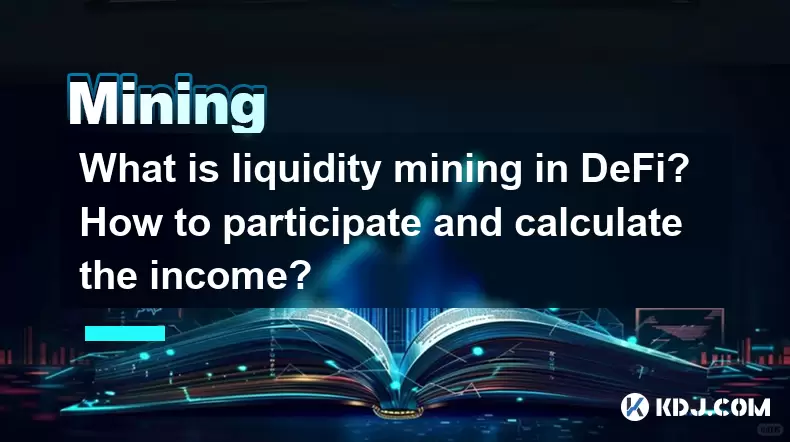
What is liquidity mining in DeFi? How to participate and calculate the income?
Jun 20,2025 at 03:21pm
Understanding Liquidity Mining in DeFiLiquidity mining is a core concept in the decentralized finance (DeFi) ecosystem that allows users to earn rewards by providing liquidity to decentralized exchanges (DEXs) or lending platforms. In traditional finance, liquidity providers are usually institutional players, but DeFi democratizes this process, enabling...
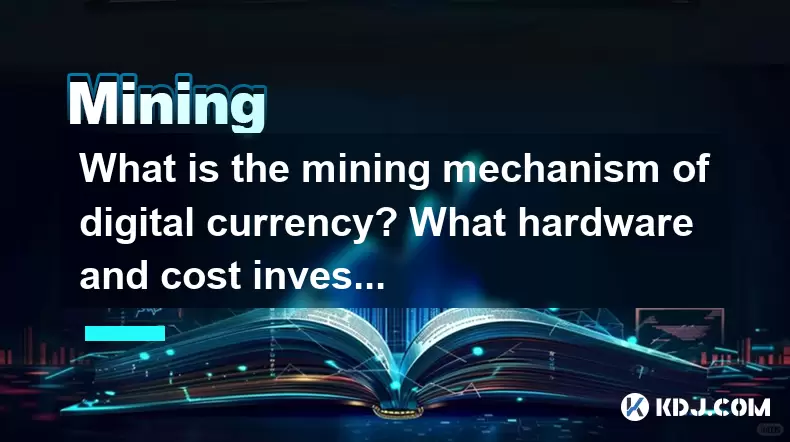
What is the mining mechanism of digital currency? What hardware and cost investment are required?
Jun 23,2025 at 06:29am
Understanding the Mining Mechanism of Digital CurrencyThe mining mechanism of digital currency is a foundational process that ensures transaction validation and network security. In most Proof-of-Work (PoW) cryptocurrencies like Bitcoin, miners compete to solve complex mathematical puzzles using computational power. The first miner to find a valid solut...
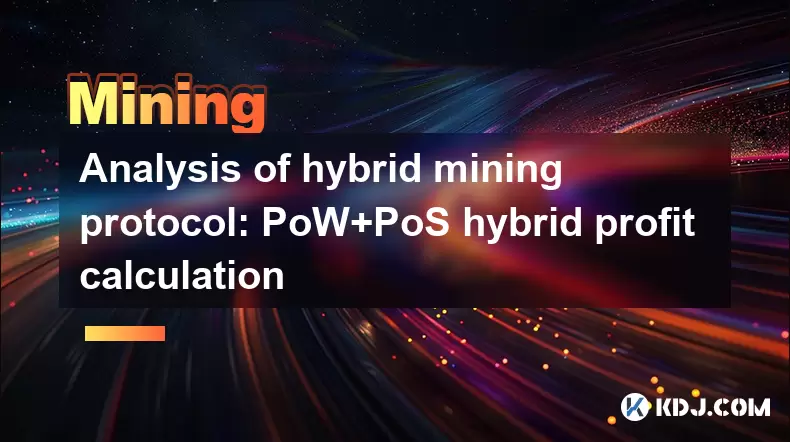
Analysis of hybrid mining protocol: PoW+PoS hybrid profit calculation
Jun 23,2025 at 10:15am
Understanding Hybrid Mining ProtocolsIn the realm of blockchain technology, consensus mechanisms are pivotal in maintaining network integrity and transaction validation. A hybrid mining protocol combines two or more consensus algorithms to achieve a balance between security, decentralization, and energy efficiency. The most commonly adopted hybrid model...
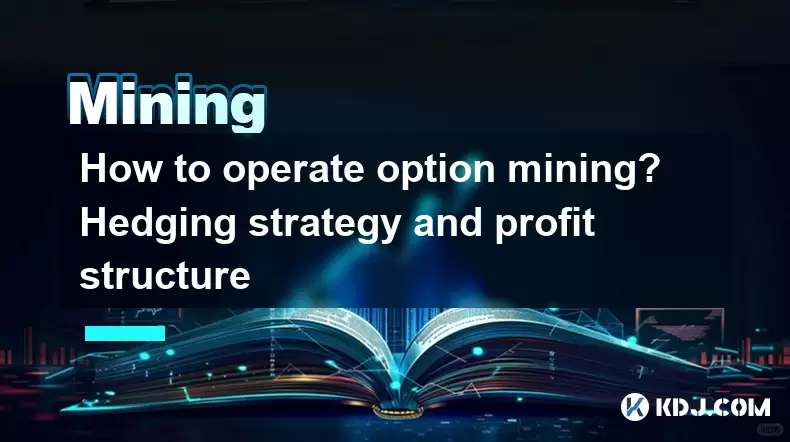
How to operate option mining? Hedging strategy and profit structure
Jun 21,2025 at 03:29pm
What is Option Mining?Option mining refers to a decentralized finance (DeFi) strategy where participants provide liquidity or take specific derivative positions in options protocols to earn rewards. Unlike traditional yield farming, option mining often involves liquidity provision for options markets, allowing users to generate returns through premiums ...
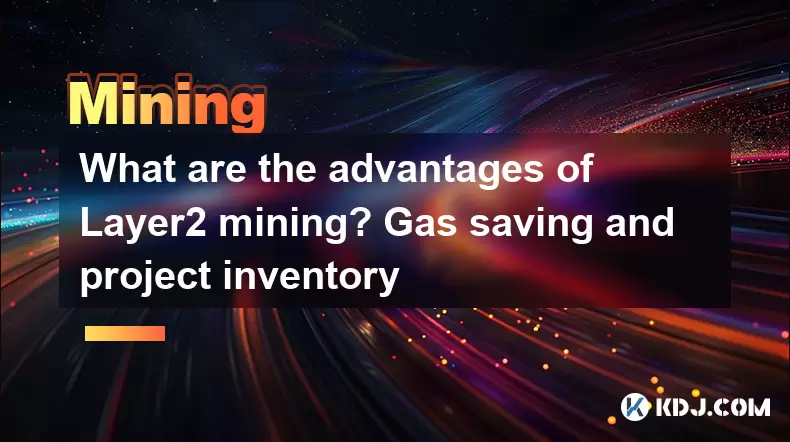
What are the advantages of Layer2 mining? Gas saving and project inventory
Jun 20,2025 at 04:50am
Understanding Layer2 Mining and Its SignificanceLayer2 mining refers to the process of participating in decentralized applications or protocols that operate on top of a primary blockchain (such as Ethereum) using scaling solutions like Optimism, Arbitrum, or zkSync. Unlike traditional mining on Layer1 blockchains, which often involves high computational...

Is contract mining safe? Key points of smart auditing and vulnerability prevention
Jun 19,2025 at 08:08pm
Understanding Contract Mining in the Cryptocurrency SpaceContract mining refers to a method within blockchain ecosystems where users can participate in mining operations through smart contracts. Unlike traditional mining, which requires physical hardware and technical expertise, contract mining allows participants to invest funds into a mining pool or p...

What is liquidity mining in DeFi? How to participate and calculate the income?
Jun 20,2025 at 03:21pm
Understanding Liquidity Mining in DeFiLiquidity mining is a core concept in the decentralized finance (DeFi) ecosystem that allows users to earn rewards by providing liquidity to decentralized exchanges (DEXs) or lending platforms. In traditional finance, liquidity providers are usually institutional players, but DeFi democratizes this process, enabling...

What is the mining mechanism of digital currency? What hardware and cost investment are required?
Jun 23,2025 at 06:29am
Understanding the Mining Mechanism of Digital CurrencyThe mining mechanism of digital currency is a foundational process that ensures transaction validation and network security. In most Proof-of-Work (PoW) cryptocurrencies like Bitcoin, miners compete to solve complex mathematical puzzles using computational power. The first miner to find a valid solut...

Analysis of hybrid mining protocol: PoW+PoS hybrid profit calculation
Jun 23,2025 at 10:15am
Understanding Hybrid Mining ProtocolsIn the realm of blockchain technology, consensus mechanisms are pivotal in maintaining network integrity and transaction validation. A hybrid mining protocol combines two or more consensus algorithms to achieve a balance between security, decentralization, and energy efficiency. The most commonly adopted hybrid model...

How to operate option mining? Hedging strategy and profit structure
Jun 21,2025 at 03:29pm
What is Option Mining?Option mining refers to a decentralized finance (DeFi) strategy where participants provide liquidity or take specific derivative positions in options protocols to earn rewards. Unlike traditional yield farming, option mining often involves liquidity provision for options markets, allowing users to generate returns through premiums ...

What are the advantages of Layer2 mining? Gas saving and project inventory
Jun 20,2025 at 04:50am
Understanding Layer2 Mining and Its SignificanceLayer2 mining refers to the process of participating in decentralized applications or protocols that operate on top of a primary blockchain (such as Ethereum) using scaling solutions like Optimism, Arbitrum, or zkSync. Unlike traditional mining on Layer1 blockchains, which often involves high computational...

Is contract mining safe? Key points of smart auditing and vulnerability prevention
Jun 19,2025 at 08:08pm
Understanding Contract Mining in the Cryptocurrency SpaceContract mining refers to a method within blockchain ecosystems where users can participate in mining operations through smart contracts. Unlike traditional mining, which requires physical hardware and technical expertise, contract mining allows participants to invest funds into a mining pool or p...
See all articles

























































































